Snowshoeing through the Shouh Trees
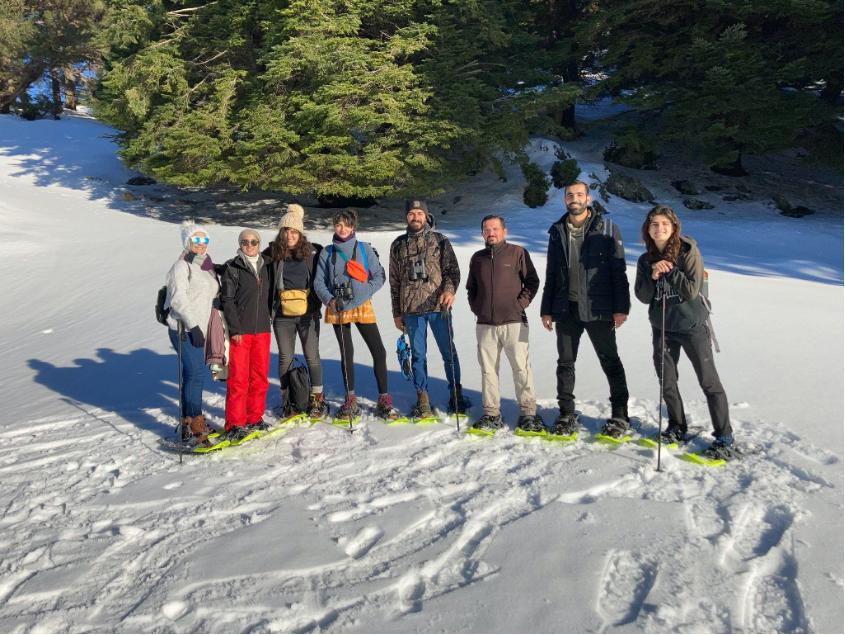
Snowshoeing through the Shouh Trees
On Saturday February 12th at 6am, as the sun rose above Beirut, a few EA Core staff set out for Akkar el Atiqa. On the agenda: discover the majestic shouh forest in the silence of winter and learn more about the tree we intend to protect. The four team members, Ahmad, Taha, Fatima, and Rihab, received us with open arms. After some customary mana2eesh, the group tied snowshoes to their backpacks and set off into the forest.
The Akkar el Atiqa team members, who know the forest very well, were excited too. They had never visited the forest with so much snow and looked forward to experiencing it in its most quiet and inaccessible season.
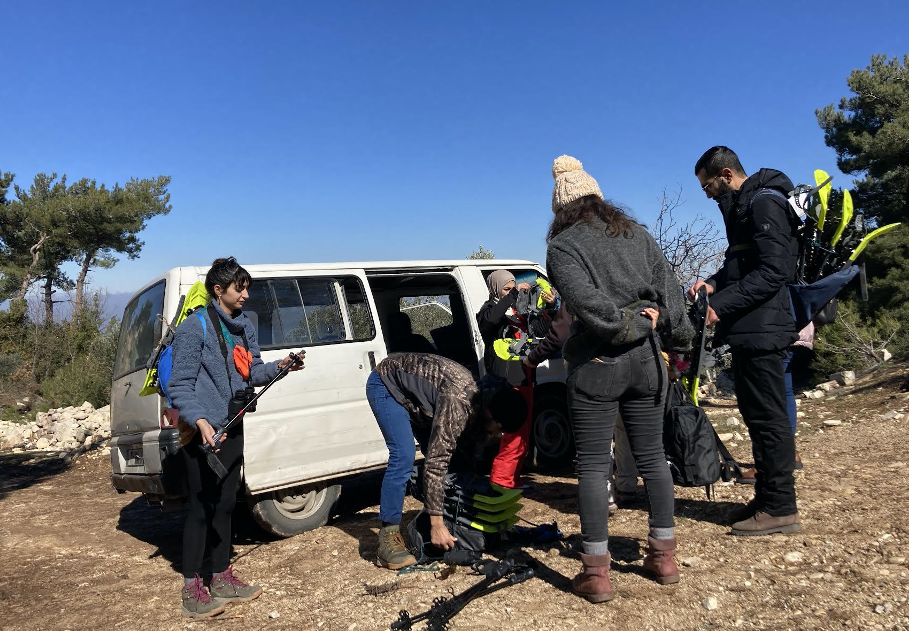
We learned from the team that we were about to hike through the largest continuous pine forest in Lebanon (a forest characterized by species from the Pinaceae family, conifers best-known for their needles and cones such as pines, firs, and cedars). In Lebanon as everywhere, habitats are being fragmented by roads and urban developments. Fragmentation confines animals to smaller habitat areas and thus decreases genetic diversity, which can negatively impact species health and lead to population decline. So this large and continuous forest is one of the best animal habitats in Lebanon, especially for apex predators like the locally vulnerable gray wolves (Canis lupus) and striped hyenas (Hyaena hyaena), who need large uninterrupted ranges to thrive.
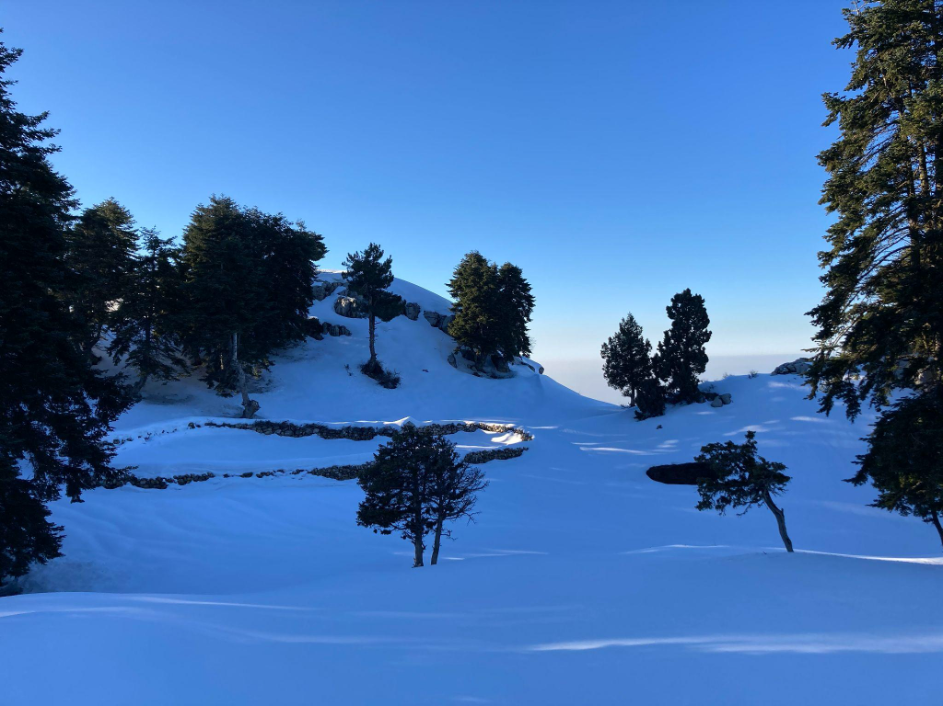
The team is concerned about the shouh’s regeneration, and specifically the process by which young shouh saplings are able to successfully germinate and grow (known as “recruitment”). If no baby trees are able to grow, the shouh population will eventually disappear as older trees die. We hiked from areas where the forest is relatively healthy and one can spot shouh saplings, to areas where there were none in sight. If we are able to encourage regeneration in one specific area, we’ll be able to extrapolate lessons learned to the entire forest.
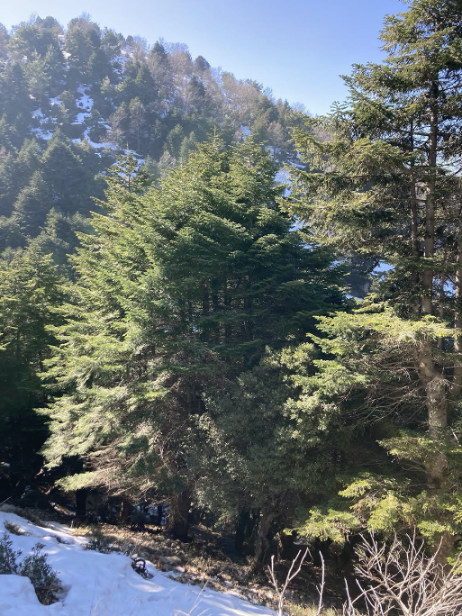
While snowshoeing through the forest, we paid attention to the shouh trees to understand whether illegal cutting is happening for timber or firewood. We found many examples of this practice in the 40,000m2 section of forest the team is most concerned about protecting. This illegal cutting situation has to be contextualized in Lebanon’s crisis, as the fuel shortage is forcing people to turn to firewood as fuel material for heating and cooking.
Shepherds and their herds have been part of the forest’s landscape for centuries, and grazing is beneficial for nutrient cycling and species regeneration. However, when livestock eat young saplings before they can grow at too fast a rate, detrimental effects can take place. We’re investigating whether inadequate grazing management may be preventing the trees from regenerating.
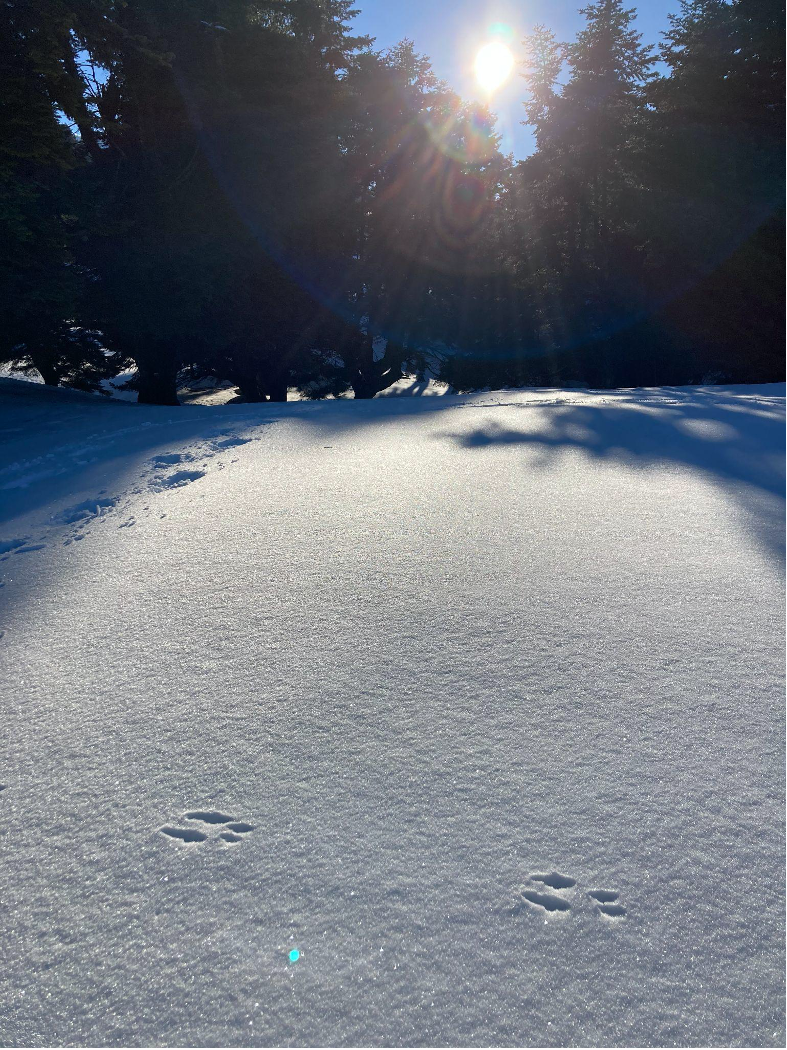
Everyone was delighted to see so many animal tracks, signs that wildlife is doing well in the forest. Every species in an ecosystem is interconnected and interdependent, so by protecting the shouh trees, a dominant keystone species of the forest habitat, we would protect the critters that directly and indirectly depend on the tree for habitat. The 40,000m2 area the team is investigating is part of the “Qammouaa - Dinnyeh - Jurd Hermel” Key Biodiversity Area (KBA), assessed in 2017 as home to many endangered plants and reptiles such as the Lebanon viper (Montivipera bornmuelleri).
Three days before our snow hike, people spotted a pack of wolves on the peripheries of the forest. This is great news. Very few wolves remain in Lebanon and Syria, mostly due to hunting, but wolves are important members of their ecosystems as predators at the top of the food chain. They keep their prey species in check, which in turn positively affects vegetation biodiversity.
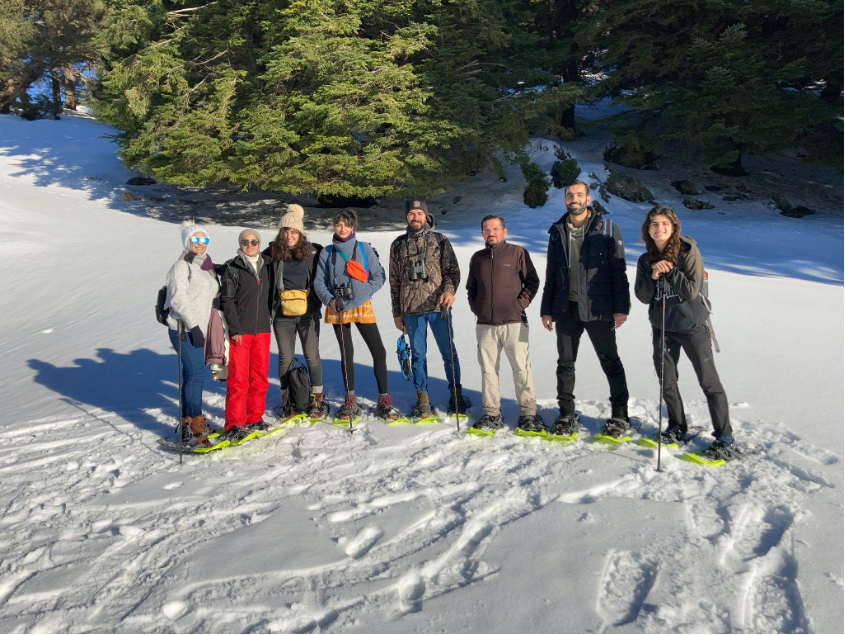
Thank you to the Akkar el Atiqa team for teaching us about the forest, the shouh, and the region. Stay posted for more information on the community-maintained plan for shouh regeneration and protection!